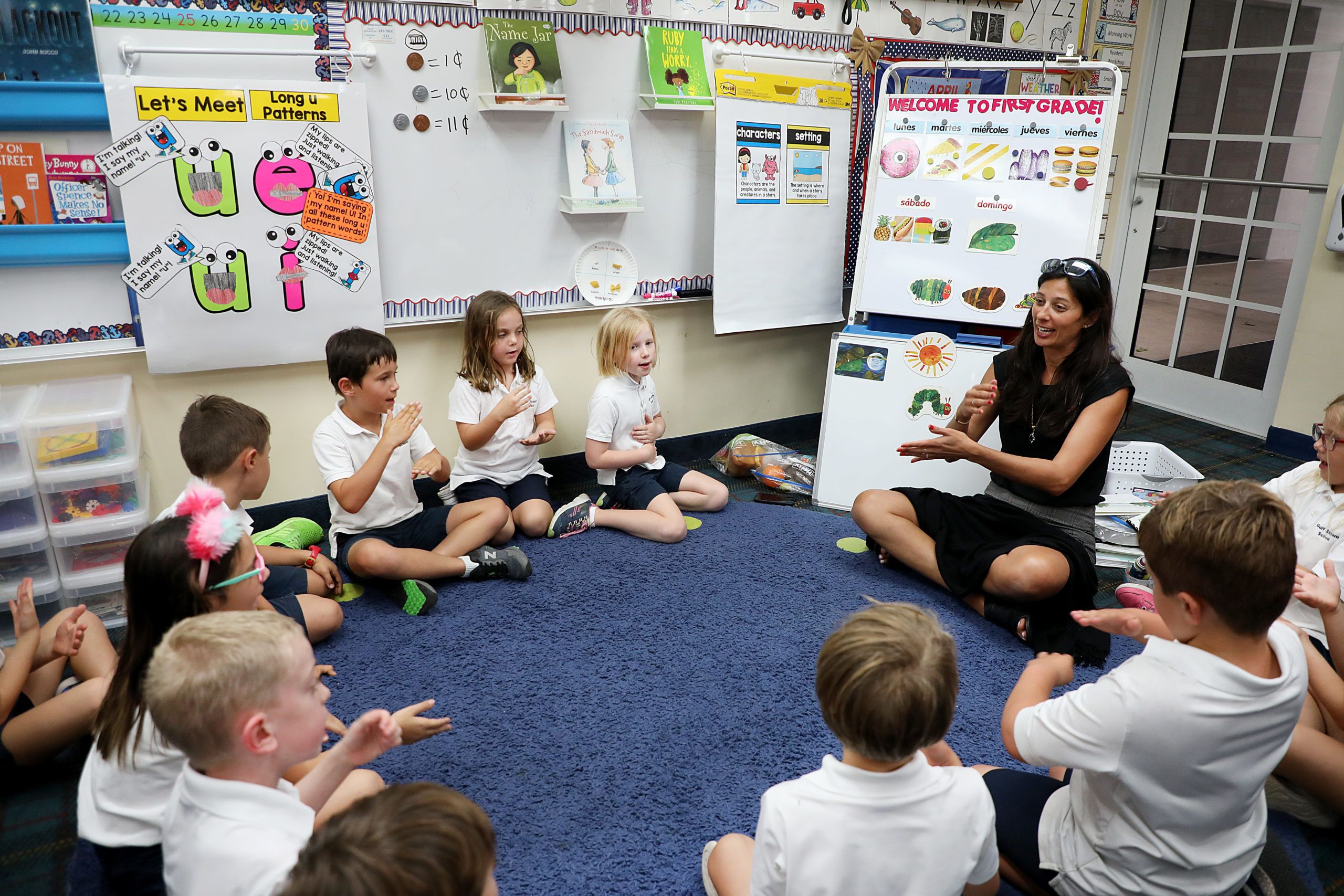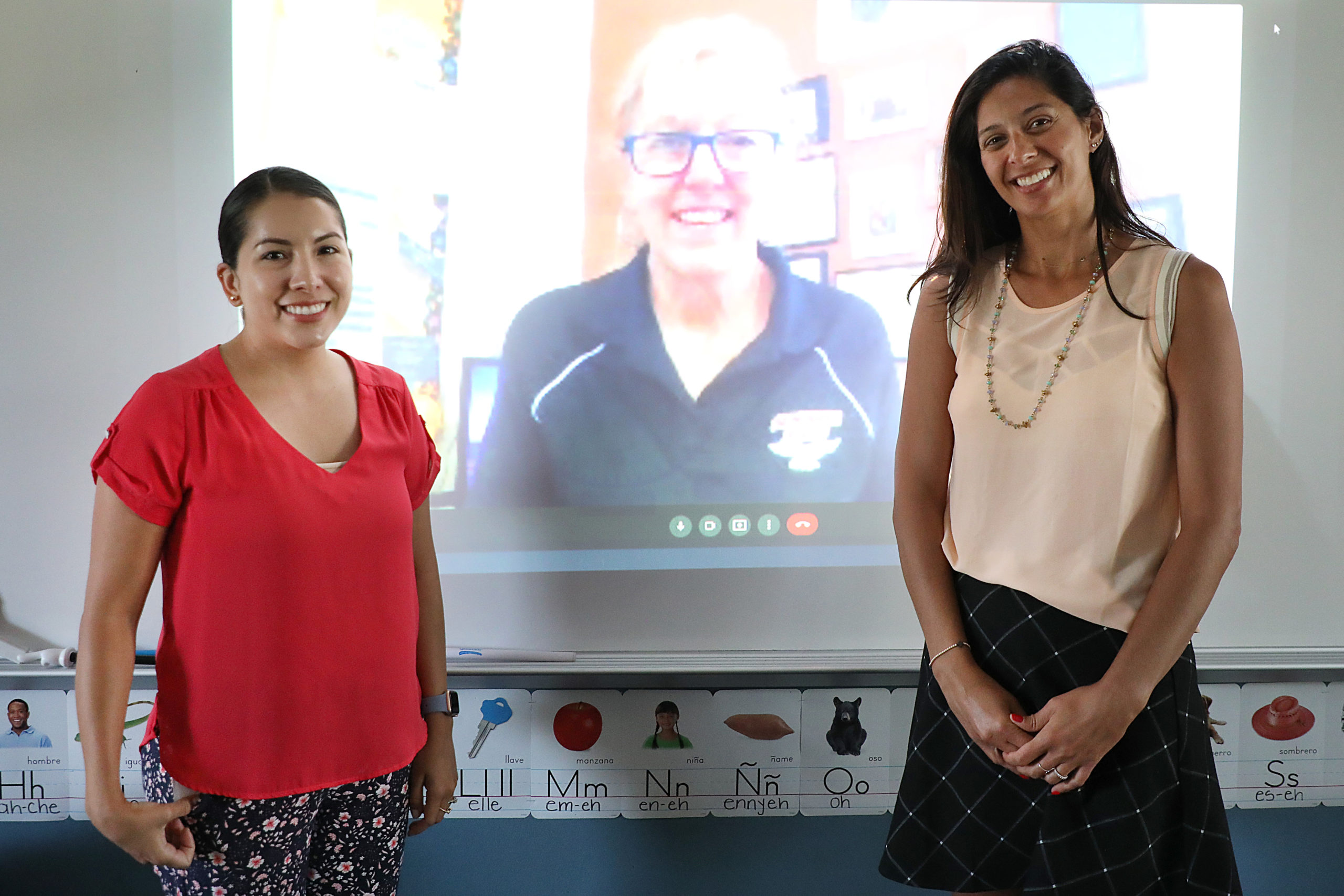
Opening Up New Worlds: How teaching Spanish and ASL together can benefit students
A few years ago we became interested in learning American Sign Language (ASL) and decided to take classes together. Not only were we fascinated by the language itself, but we were also captivated by the rich visually-based culture that many Deaf individuals and CODAs (Children of Deaf Adults) are proud to be a part of. We also realized that incorporating ASL in our Spanish classes could be a way to not only teach our students another language but also a way to assist our students in acquiring and remembering Spanish vocabulary and expressions that we teach them on a weekly basis.

Señora Victoria Montoya and Ms. Claudia Cruz pose with their ASL professor, Rose Adams, who is Deaf and teaches at Seminole Ridge High School in Loxahacthee.
We often tell our students how important it is to appreciate other cultures and the importance of communicating in different ways. Our students are aware that sign language is the bridge that connects the world of hearing people to the Deaf culture. This also involves having an understanding of the differences between the two worlds and knowing that what may be accepted in our hearing culture might be considered offensive to another. Taking ASL lessons from a professor who is Deaf has definitely helped us put these differences into perspective.
One of the most important things we learned is that ASL is a very visual language, thus requiring eye contact at all times. In the Deaf culture, for example, looking away makes Deaf people feel ignored as it shows disinterest in the conversation and also is considered rude. By incorporating sign language in our Spanish lessons, we notice that our students are more prone to participate as they have to pay close attention to the signs that are being taught, and also they are able to remember vocabulary in Spanish by seeing the teacher signing.
We love to use this incredible visual tool with our students to aid in their process of acquiring a second language. In our lessons, we explain the origin of the signs, for example, the sign for shoes is made by closing both hands and whacking them together twice. This is a reference to Dorothy clicking her shoes together in the movie The Wizard Of Oz. In this way, the students get meaningful connections that allow them to remember and use both languages simultaneously.
How ASL is used in Lower School Spanish

Grade 1 students sign the lifecycle of the butterfly during Spanish class with Ms. Claudia.
Sign language is used in Lower School when Ms. Claudia is teaching Spanish songs, reading books in class, or while introducing students to new vocabulary associated with different topics (e.g., alphabet, emotions, the weather, foods and drinks, likes and dislikes, animals, colors, sports, action words, etc.). Since sign language is very visual, we believe that the gestures used while speaking to the students in Spanish not only help them improve their receptive language and speaking skills, but also enable them to attain Spanish vocabulary and sentences at a faster pace. By doing this, the children begin to pick up the meaning of the words we go over in class as they produce the Spanish vocabulary or sentence along with a particular sign.
In first grade, for instance, the students created their Spanish version of the book The Very Hungry Caterpillar (Una oruga muy hambrienta) by Eric Carle with Ms. Claudia. Throughout this unit, students learned about the lifecycle of the butterfly, the days of the week, and food vocabulary. They explored many of the keywords from the story by using both Spanish and sign language. You will find that many of the students enjoy showing their teachers and parents that they not only know a new Spanish word but also the corresponding ASL sign.
How ASL is used in Middle School Spanish

A student works with Señora Montoya on her ASL skills.
In Middle School, sign language is used while Señora Montoya simultaneously speaks. In this way, the students identify words that they have already learned, and thus the English translation is avoided. Before each unit, students have two vocabulary portions; one at the beginning of the unit and one in the middle. When the vocabulary is presented to the students, they are given a list of words in Spanish and Señora Montoya presents pictures that correspond to each word on the board. The moment she says the word she makes the sign and the students write the meaning of the word on their lists. The incorporation of ASL signs greatly assists her students in acquiring and remembering Spanish vocabulary. It also allows her to go through her classes without ever having to stop speaking Spanish and still get the new vocabulary across to her students.
Why people should consider incorporating ASL into their language classes
Learning another language should be an opportunity for everyone. We are different humans and we have particular needs. Having the possibility of knowing more than one language opens up opportunities to engage in multiple scenarios even with a language that is not often explored in a PreK – Grade 8 school. We are grateful to be able to teach our students two languages at once and we hope that one day more of our students will be able to be not just bilingual but trilingual! We encourage all language educators to try to incorporate sign language into their curriculum.
Check out the video below that Ms. Claudia and Señora Montoya created for a presentation they gave about their use of ASL in the classroom.
By: Ms. Claudia Cruz (Spanish and Kindergarten Assistant) and Señora Victoria Montoya (Spanish)